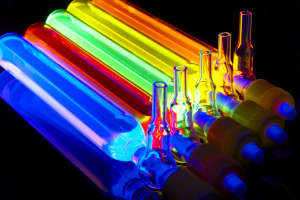July 5, 2011
Working with the Universities of East Anglia, York and Nottingham and using nanotechnology 100,000 times smaller than the thickness of a human hair, the researchers are working on harnessing the vast energy of the Sun to produce clean fuel.
The scientists are presenting their research at the Royal Society’s annual Summer Science Exhibition which opens today.
Members of the consortium at UEA have already found a way to produce hydrogen from water. A revolutionary future use of this technology could be to make the fuel for hydrogen-powered cars, rather than making it from fossil fuel.
Now the scientists are aiming to use the same technology to create alternatives for other fuels and feedstock chemicals, including turning methane into liquid methanol and carbon dioxide into carbon monoxide.
The sun’s potential is vast – just one hour of sunlight is equivalent to the amount of energy used over the world in an entire year – yet no one has yet tapped into its immense power to make fuels.
Professor Wendy Flavell, from The University of Manchester’s Photon Science Institute, and her colleagues are working to create a solar-nano device using ‘quantum dots’ – tiny clusters of semiconducting material which absorb sunlight.
When sunlight is absorbed, carriers of electric current are created. Together with catalyst molecules grafted to the surfaces of the dots, these create the new fuel – for example hydrogen can be produced from water. Professor Flavell said: “Our sun provides far more energy than we will ever need, but we use it really inefficiently.
“To make better use of the fantastic resource we have in our Sun, we need to find out how to create solar fuel that can be stored and shipped to where it is needed and used on demand.
“Most hydrogen so far is obtained from fossil fuels, which are of course not going to last for ever, so it is important to get energy from renewable sources.“One of the key questions is: ‘what do we do when the sun goes down, what happens at night?’ If we can store the energy harnessed from the sun during the day then we will have supplies ready to use when the sun is not shining.
To read more click here...








No comments:
Post a Comment